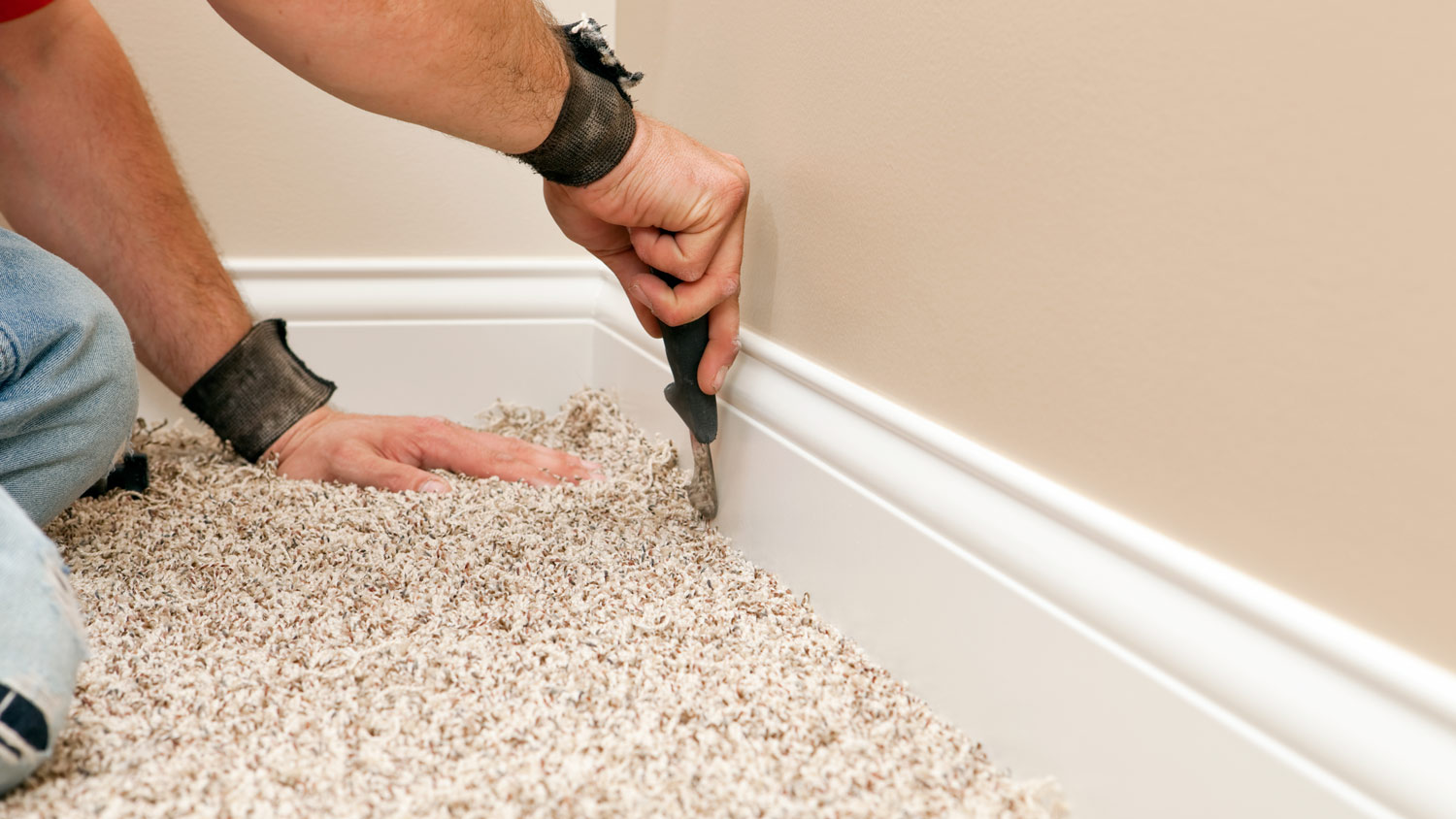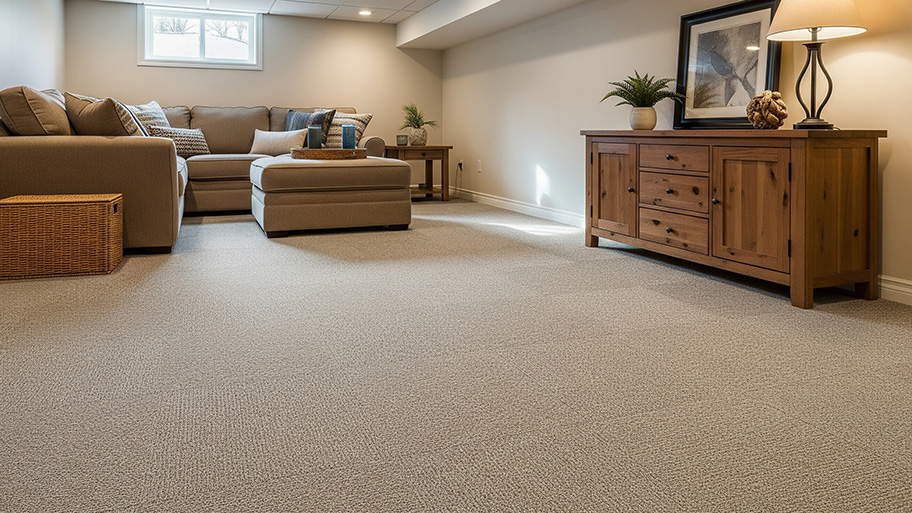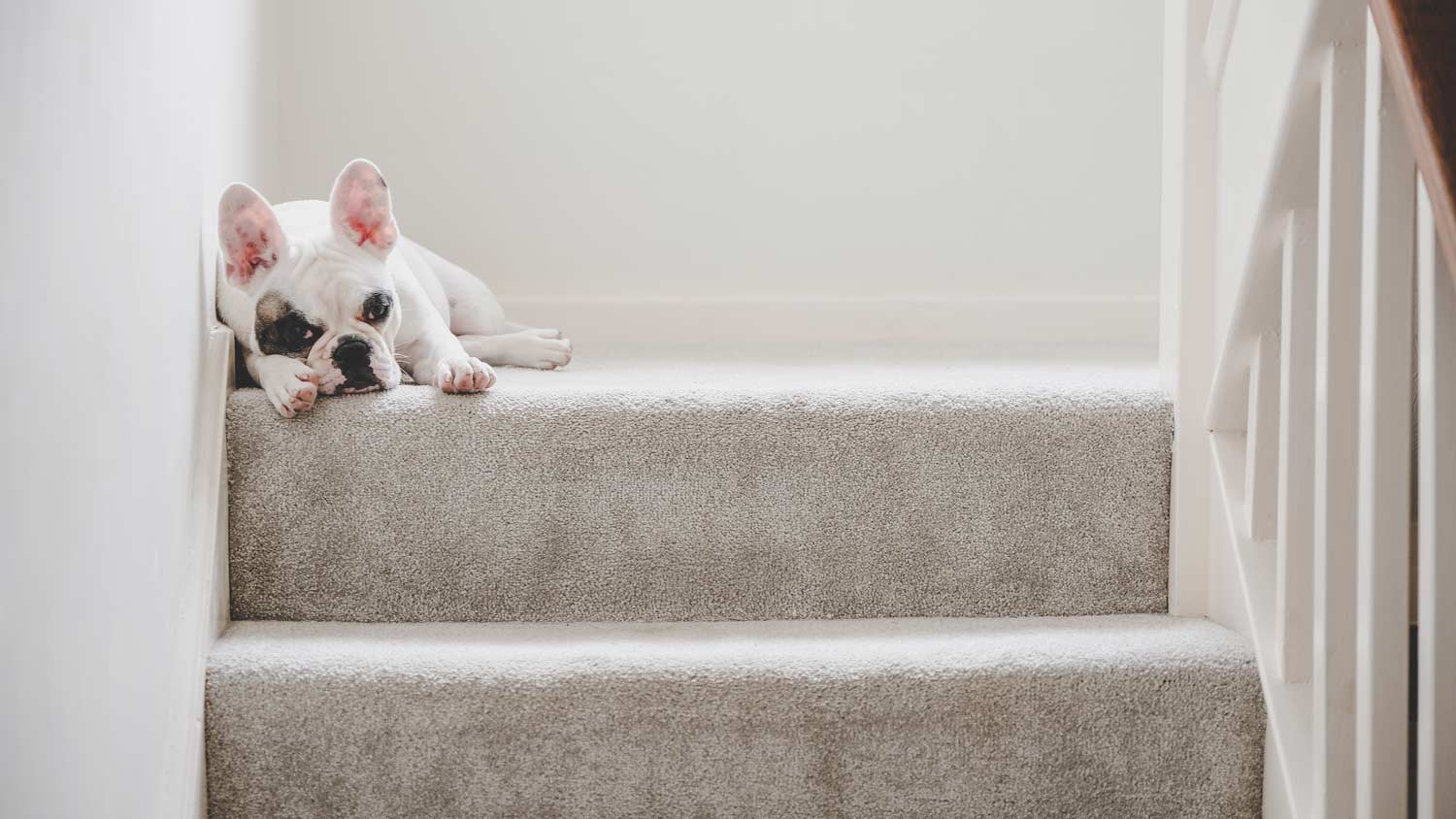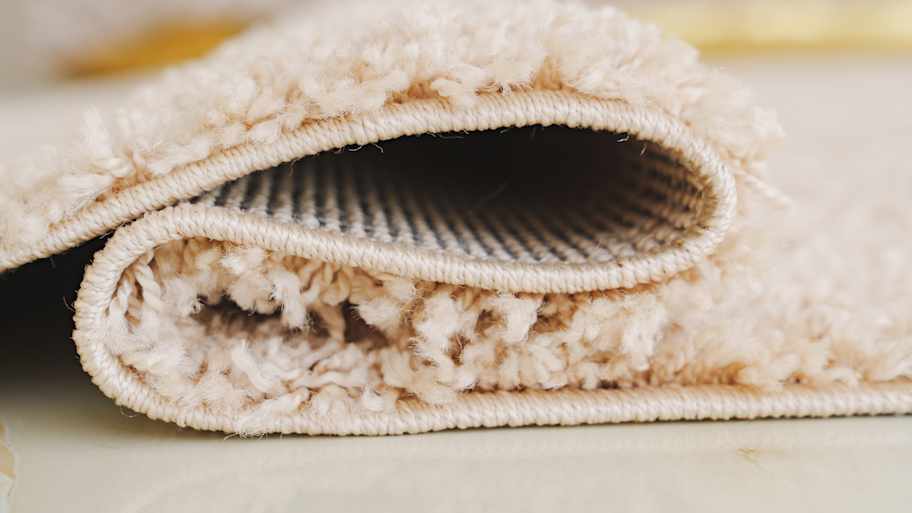
Get a clear estimate for carpet repair cost. Learn what impacts pricing, compare repair types, and find ways to save on your next carpet project.
Give your stairs a DIY makeover with classy carpet runners


Carpet runners can transform a steep, slick, quirky, or outdated set of stairs from a creaky tripping hazard into a sound-absorbing, traction-covered dream. Stair runners are a good option if you have the type of tread that provides little traction on steep stairs. With the number of carpet runner fabrics and designs available, you can find a stair runner in the right shade and pattern to fit your decor and add practical value. This project can save some cash on carpet installation costs, so take a look at how to install carpet runners yourself.
Carpet installation preparation includes careful measuring. For stairs, you will need to measure the height of the riser (vertical side of the stair) and the depth of the tread (the top surface of the stair). Multiply the height of the riser by the number of risers on the staircase. Then multiply the depth of the tread by the number of treads on the staircase. Add the two numbers together and add six to eight inches to make up for any waste. The final number is the carpet runner length you will need.
Carpet runners come in 27- and 32-inch widths. Measure the width of your staircase to decide which width will work best for your stairs, making sure to leave two to three inches of space between the edge of the runners and the baluster and skirtboard.
You can install carpet runners on stairs using one of two methods—Hollywood (sometimes called upholstered) and waterfall. The Hollywood method follows the contour of the stairs, attaching under the nose (the lip) of the stairs for a tighter fit. The waterfall method involves attaching the carpet to the edge of the tread and dropping straight down to the bottom of the riser without following the contour of the stair. The Hollywood method is more sleek and crisp, but the waterfall method offers easier installation.

Subtract the width of the stair runner from the width of the staircase (measurement from the baluster to the skirtboard). Divide this number by two to determine how much space you need to leave between the skirtboard and baluster on each side of the runner.
Use a pencil to mark this distance from the baluster and from the skirtboard. These lines will act as layout marks as you place the runner.
Use sheet-metal snips to cut the tack strips two to three inches shorter than the width of the runner. You need one tack strip for each tread, so cut as many as needed for the size of the staircase.
At the bottom of the first riser, place a piece of scrap tack strip between the riser and the first tack strip. The scrap piece will provide uniform spacing for the tack strip placement on each tread. Center the tack strip (not the scrap) between your layout marks and make sure the tacks are angled toward the riser. Nail the tack strip in place using either a hammer or a nail gun. Install at least one nail within two inches of both ends of the tack strip.
Use a utility knife to cut the carpet pad to the same length as the tack strips—and three inches deeper than the tread if you are wrapping the carpet pad over the nose of the stairs. If you are not wrapping the carpet pad around the nose, cut the pad slightly shallower than the depth of the tread minus the depth of the tack strip.
You can do it either way (wrapping around the nose or not), though it is more common to wrap the carpet pad over the nose when doing the Hollywood method. It is less important with the waterfall method because this method does not require the same level of precision.
Cut one piece of carpet pad per stair.
Place the pad against the tack strip’s front edge. Starting from the center of the tread, use a staple gun and 9/16th-inch staples to attach the carpet pad to the tread on the edge that is against the tack strip. Staple approximately every three inches. Pull the carpet pad tight under the nose of the tread. Staple every three inches under the nosing.
Use a framing square to check the edges of the carpet runner square. If the edges aren’t square, it makes it nearly impossible to install the runner straight. For runner edges that are not square, use the framing square and a pencil to mark the back of the runner and use a carpet knife to trim the corner to make the carpet edge square.
Use latex carpet glue to touch up the carpet runner’s edges to avoid fraying. Let the glue dry to the touch before moving to the next step.

Start at the bottom stair, and unroll the carpet runner over the bottom three or four stairs. Use the layout guides to line up the carpet runner on the first riser. As long as the carpet runner edge is square and you position it according to the layout guides, it should go straight up the stairs fairly easily.
Press the carpet runner into the bottom of the first riser. Starting at the center, staple the carpet runner every three inches. You will get the best results by pressing the stapler through the pile, which can be shallow or deep, depending on the type of carpet. Staple through the backing every three inches to secure the carpet fully.
Pull the carpet tight to the bottom of the nosing and staple it every three inches. If you are using the waterfall style, you can skip this step.
The carpet should still be lined up with the layout guides. Check the alignment as you pull the carpet over the nosing. Pull the carpet tight. Then push the carpet runner onto the tack strip, which will hold the carpet in place.
The carpet runner may buckle at this point. If it does, remove the carpet from the tack strip and start the particular stair over again. Buckling at any point can throw off the runner’s alignment and lead to the carpet coming loose over time.
Use the carpet tucker or a knee kicker to tuck the carpet between the seam of the tread and the riser. Whether you are doing the Hollywood or waterfall method, you want a tight seam with the carpet firmly taut in the tack strip and tucked into the seam.
Staple the carpet runner as close to the seam of the tread and riser as possible. Start at the center and staple every three inches moving toward the edges.
From here, you will repeat the process with every stair. Remember to check alignment using the layout guides and be sure the carpet stays taut and firmly attached to the tack strip on each tread.
At the top, leave at least one inch of extra carpet to tuck under the raw edge. Staple this edge to the top tread.
Professional carpet installers may charge anywhere from $16 to $30 per hour. Installing a carpet runner on stairs is not a complicated project. However, it can take anywhere from five to six hours, depending on the length of the staircase. This is a project that most DIYers with a little experience can handle, but it does take time and precision, so be ready to spend the better part of a day. If you do not have the time or tools necessary to make this project doable in one day, it might be worth getting a quote from a local carpet installer.
From average costs to expert advice, get all the answers you need to get your job done.

Get a clear estimate for carpet repair cost. Learn what impacts pricing, compare repair types, and find ways to save on your next carpet project.

The cost to carpet stairs depends on the number of stairs, material choice, and staircase type. Read on to calculate your project expenses

Not only are carpet tiles easier to install than carpet, but they’re often more affordable. So, how much does carpet tile installation cost? Let’s take a look.

Is moisture barrier carpet padding worth it? This guide explains how it works, where it's a good idea, and when it's not the best option for your home.

Carpets wrinkle and ripple for various reasons, but a good restretching can have them looking fresh and new again. Learn what causes carpet wrinkles and how to fix them.

Polypropylene carpet has pros and cons to consider. It’s ideal if you’re on a budget, but be cautious when installing it in high-traffic areas.